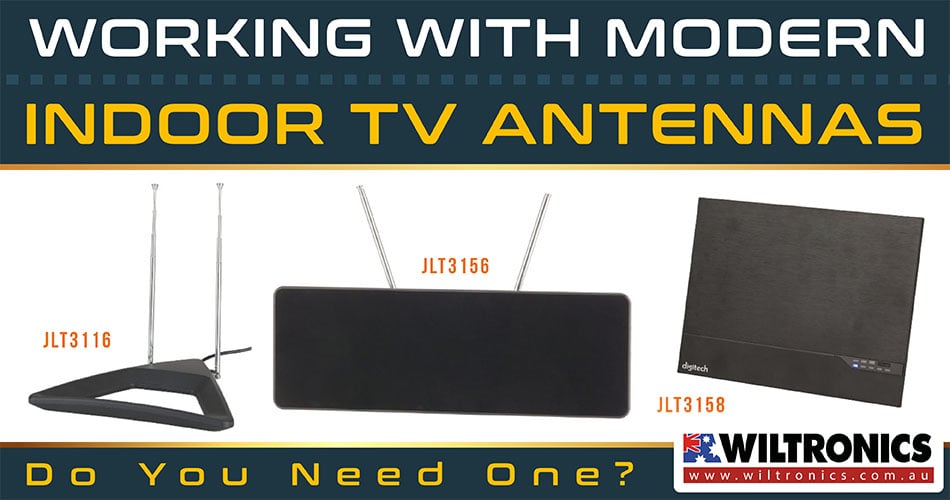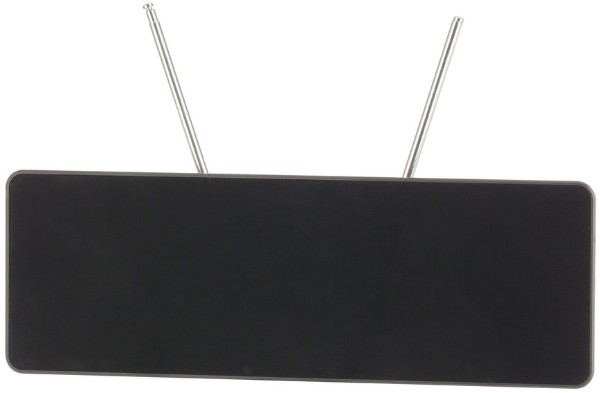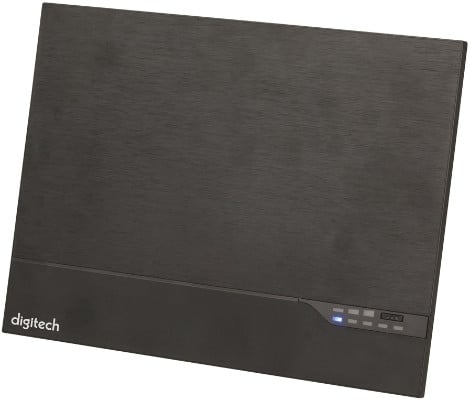How to Work With Modern Indoor TV Antennas, Do You Need One?
September 21, 2022

Breaking news: The ‘bunny rabbit’ ear indoor TV antennas have not gone out of style! They even got better and more stylish.
Great reception makes a television worthy of a watch. You will want to maximise your signal quality and, as much as possible, lessen interference.
As television units continue to improve, the same goes for antennas. Thanks to innovative technology and features, you are guaranteed the best signal reception.
Today’s indoor TV antennas, for one, look sleeker than the old-school rabbit-eared ones. That is right; they are still up for sale—but with better upgrades.
They are ultramodern, brandishing the latest technology. If you want to know more about indoor TV antennas, read ahead. Exciting stuff awaits you here!
Indoor TV Antennas Explained
TV antennas or aerials, in general, feature arranged wires or metal elements. They are designed to pick up broadcast signals from television networks.
One of the most common types is indoor TV antennas designed to receive VHF or UHF frequencies. As the name suggests, they are placed indoors, as opposed to being mounted on the roof.
If installing outdoor antennas is not possible, your best choice is to opt for indoor versions. But there are a few considerations to make.
When Do Indoor TV Antennas Work?
There are lots of questions about whether indoor TV antennas work or not. The short answer to this is yes, especially when your area has a strong—very strong signal.
For one, if the main TV transmitter is close to your home. You are most likely to be fine for reliable reception.
The height is also among the most critical factors in getting decent reception. Go high; if possible, place it in an attic or a second-story location by a window, along the wall, or near the ceiling.
It also helps if the transmitter is aligned with where you placed the TV and antenna. This limits the amount your property blocks the signal.
If you think these factors are in your favour, then there is no denying that an indoor aerial will work on your end.
When Do Indoor TV Antennas Not Work?
The truth is that no matter how modern your rabbit ear-type antenna is, there are times that it, well, fails. One thing is that the aerial is not installed where the TV signals are strong.
At other times, it is positioned where there is no signal at all, which is the worst-case scenario. Either the interior or the walls impede the signals as well as neighbouring buildings.
If installed behind the television, the unit itself could be the blocking source. It is crucial to know what factors can affect your indoor antenna, and if not, it would be a waste of time, energy and money.
But fret not; there are some practical options and effective tricks that may work!
Tricks to Boost Your Reception Quality
Getting the best reception for indoor TV antennas can be a mix of science and art. But these tips and tricks will help.
1. Point it
Some antennas are directional, a.k.a. unidirectional, which must be oriented toward a broadcast tower. To find where the local towers are in your area, look for a transmitters map for your area such as the Nu-life TV map. Once you know where the towers are, point the aerial in that direction.
Suppose you live in the suburbs of a big city. Most broadcast towers may lie in the same direction. You may have to reorient the antenna for different stations.
When doing so, scan through the channels on your TV to see which antenna location pulls in the most stations.
2. Play the field
The reception quality will depend on how far you are from the broadcast towers. This includes terrain and your surroundings, such as houses, buildings, trees, and so on.
If you have a multidirectional (Omni) antenna, it should receive signals from all directions. It also might be better for urban locations. But they might not pull in more near stations as a well-positioned directional aerial.
If possible, try a few different indoor TV antennas to see which one works best.
3. Go high
As mentioned, considering the height can get you better reception. It is no surprise why, in most cases, roof-mounted aerials outperform indoor models.
Also, this is why placing your antenna in the basement is not a smart move. Consider the attic or the second floor of your home, if there is any.
Some of the newer flat antennas can be installed along the walls. Plus, they look sleek and aesthetically pleasing.
Tip: Place the antenna in the same room as the TV.
4. Stop the interference
Ensure nothing stands between your indoor aerial and the broadcast towers. Or else your reception will degrade.
Place the antenna in or near a window. Most especially, not where your view consists of a neighbouring building’s brick wall.
Another best solution is to avoid a location that gets obscured by large trees and a garden building, to name a few. Consider a few different windows and walls to find the best spot.
5. Invest in an amplifier
Get your indoor TV antenna amplified. Some of the better models have built-in amplification. This boosts the signal to improve its strength before it enters the television.
Does your reception only receive minimal signal strength? The addition of an amplifier can help tip this over the edge to an acceptable level. Even better, they can amplify noise and distortion and overload reception.
If you already have an amplified antenna, try it with the amp turned off. If the reception is good, leave it off. But if that does not work well, turn the amp on and rescan the channels to test whether it improves or not.
6. Rescan channels
Your last resort could be rescanning for channels from time to time. Do this at least every month or so, as you might get some new stations you could not pick up earlier.
Get Your Indoor TV Antennas Here!
Enjoy free HD channels with no monthly contract with these indoor TV antennas! The advanced technology optimises the best signal transmission protection against interference. Plus, they provide long-distance reception.
Rabbit Ears TV Antenna – UHF/VHF Passive Indoor TV Antenna
No longer available
Product code: JLT3116
A passive indoor TV antenna with superior reception for both UHF/VHF signals. You can sit it flat on a surface or mount it onto a wall. Suitable for areas with strong television reception.
Slim Digital TV Indoor Antenna with Amplifier & LTE/4G Filter
No longer available
Product code: JLT3206
This unit features an LTE/4G filter that removes mobile network signals. It protects your TV from mobile broadband interference.
It comes with telescopic dipoles and adjustable gain and loop for optimal performance.

Indoor Flat Panel UHF/VHF Digital TV Antenna with Amplifier
Product code: JLT3156
This unit features signal-clear technology with extremely low noise circuitry. It receives both UHF/VHF signals as well as DAB+ radio. Thus, perfect for use with home theatre receivers for FM radio reception.
It also includes a separate amplifier with independent UHF and VHF gain adjustments. This gives you greater control over your signal.
Power the amplifier with the supplied mains adaptor or a USB cable (mini plug lead not supplied).

Slimline Flat Panel Indoor UHF/VHF Antenna with Signal Meter
Product code: JLT3158
This classy slimline flat panel indoor TV antenna can be used on a table or mounted on the wall. It features an LED signal strength meter to position the antenna for optimal reception.
An in-built automatic gain amplifier also amplifies the UHF/VHF signals. Plus, it includes a 4G/LTE filter.
Suitable to use with DVB-T/DVB-T2 and a signal range capable of up to 25km away from the TV tower.
The Bottom Line
The bunny ears model has been around for a long time, and it has become a classic in television technology. And from what we are able to tell, indoor TV antennas are still in demand.
If you are sure they will do a good job for you, pick them up. If not, it might be better to get something more modern. But as long as you have the recipe for getting great reception, you should be fine.
© Electrotech Brands Pty Ltd 2022


Write a Comment
You must be logged in to post a comment.